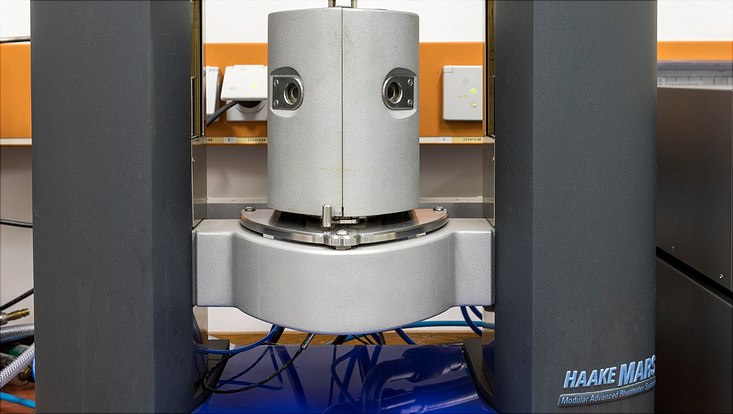Material processing and testing
Material processing and testing machines are concentrated in one department at the institute. This means that the material is processed in short ways and the materials and test specimens produced can be analyzed promptly.
Reaction plants

Photo: UHH/Mentz
Twin screw extruder with cooling bath and granulator

Photo: UHH/Mentz
Automatic Injection molding maschine

Photo: UHH/Mentz
Injection molding chamber with molded part

Photo: UHH/Mentz
Injection molding machine

Photo: UHH/Mentz
Kneader for the processing of highly viscous materials like rubber

Photo: UHH/Mentz
3D-printing (printing of a test specimen)

Photo: UHH/Mentz
Stress strain machine

Photo: UHH/Mentz
Discovery Hybrid Rheometer 2

Photo: UHH/Mentz
Investigation of vulcanisation processes (MDR)
Material processing
The production of composites is the focus of some research work at the institute. We maintain three extruders and a kneader for homogenization and compounding. The material is obtained in the form of filaments, foils or granules and converted into the desired shape by means of injection molding, hot pressing and 3D printing. Elastomers are usually pressed into sheet form and then cut to the desired shape using punching or laser cutting.
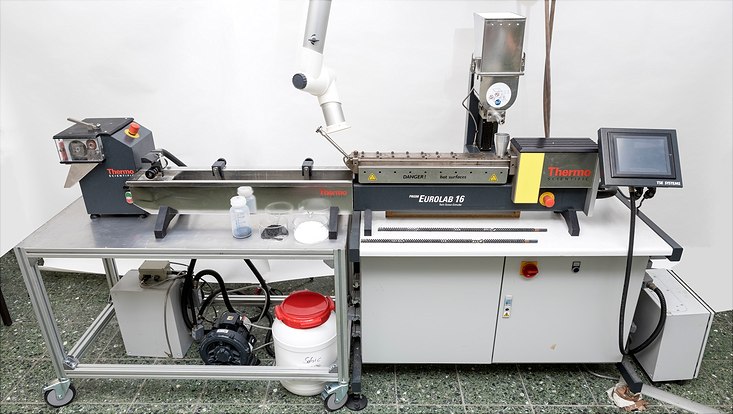
3D printing
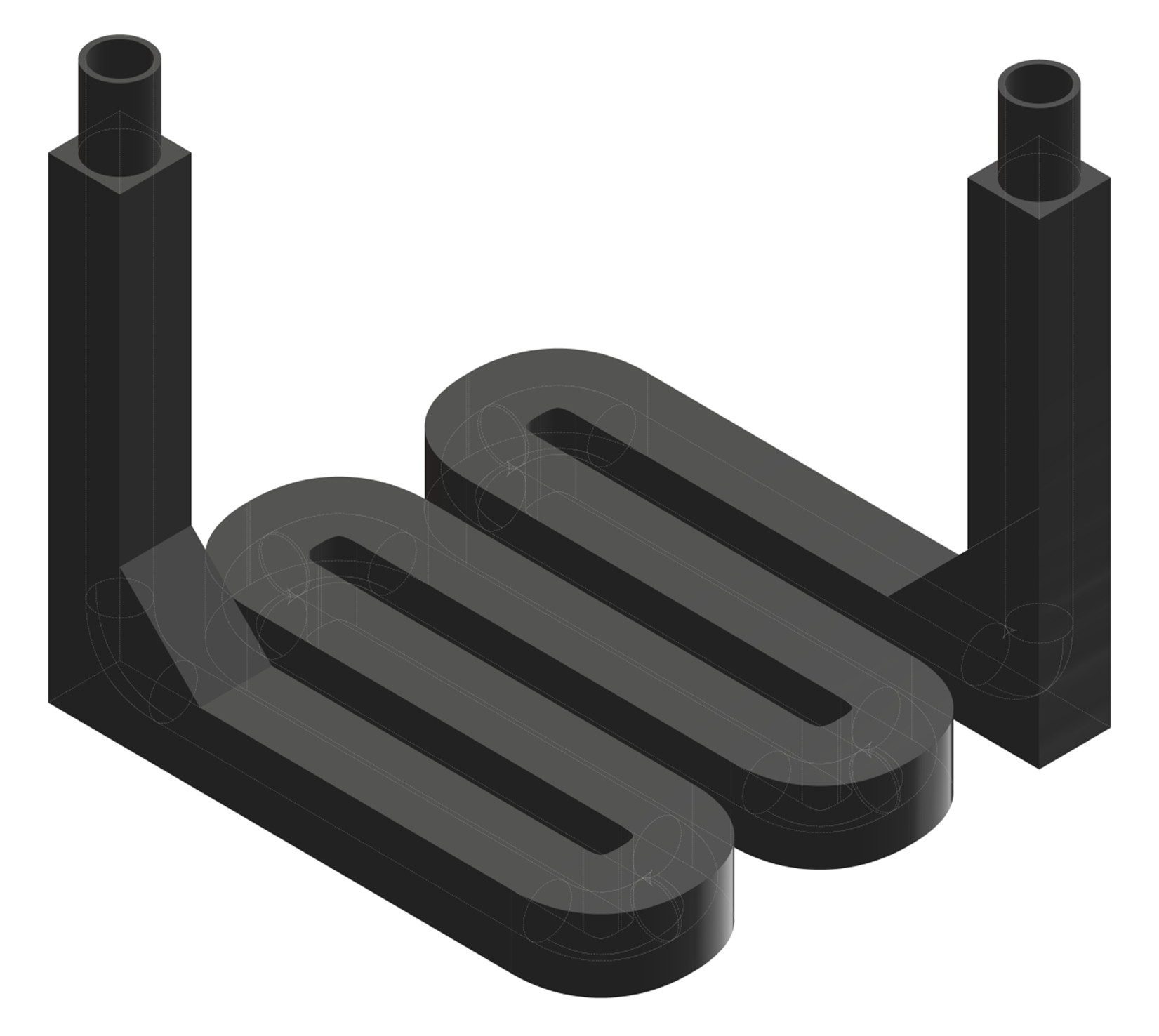
The design and construction of reactors that can be configured individually for studying chemical processes is a demanding task that requires dedicated machines and skills. Due to the current innovative 3D printing techniques, we are able to demonstrate the use of 3D printed reaction devices for classical batch and semi-batch stirred tank reactors as well as for the accelerated development of continuous processes. [1]
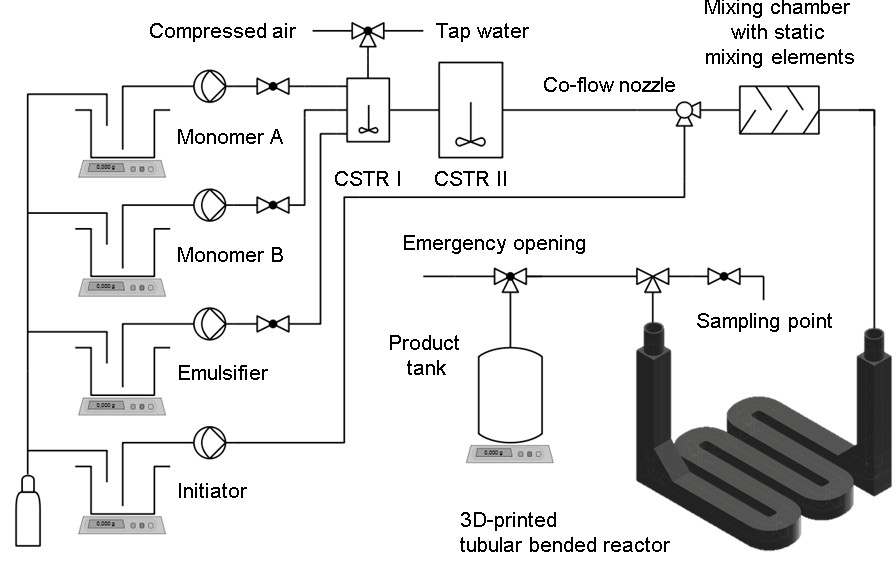
At our institute, we use the Fused Deposit Modeling (FDM) process, one of the leading extrusion-based AM technologies. This process is compatible with a wide range of suitable filaments and material properties. The most common implementation of the FDM involves a movable heated print head that extrudes the filament material onto a print bed in predefined patterns. The print bed is gradually lowered in a vertical direction to enable subsequent layers to be printed. Nowadays, the use of 3D printing has become possible at low cost in comparison to conventional processing methods in terms of material consumption and production costs.
Mechanical material testing
A full characterization of the materials produced can be performed at the institute. Important parameters, such as the modulus of elasticity, the Shore hardness or the MFR as well as the rheological and thermal properties, can be determined.
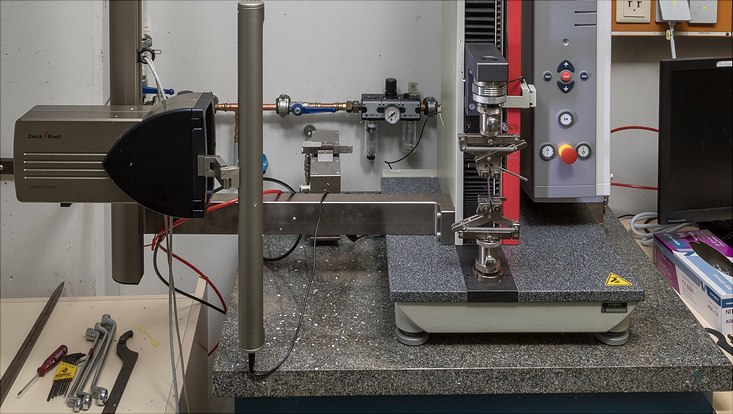
The mechanical tests include the recording of stress-strain curves, impact strength measurements, determination of Shore hardness A and D as well as abrasion tests. The force transducer for the stress-strain experiments performs measurements in the range of 4-1000 N, and with the VideoXtens the behavior of elastomers is examined.
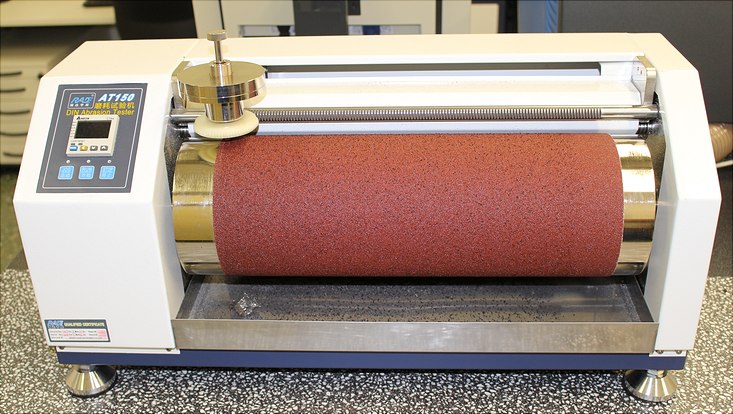
Rheological investigation
In the rheology laboratory, solutions, melts, crosslinking masses and solids are examined. The measurements over wide temperature and frequency ranges provide information about the structure of polymer chains and networks, the processing properties and the behavior in the application area (LAOS measurements). Furthermore, wear, lubrication, cross-linking and vulcanization are also examined.
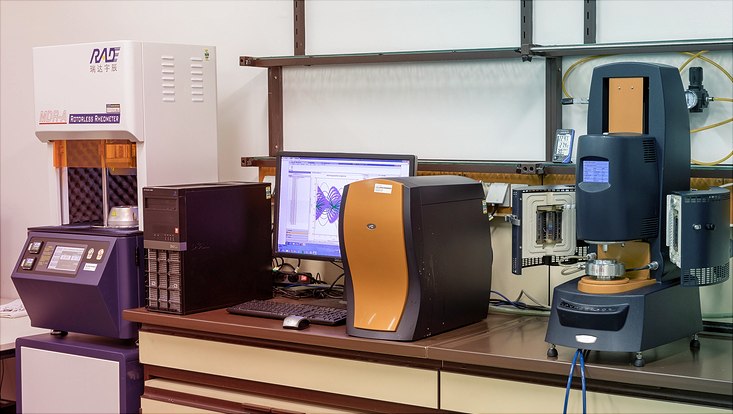
Technical specifications of the DHR-2
Torque 2 nN·m– 200 mN·m
Frequency range 10-7 – 100 Hz
Angular velocity 0-300 rad/s
Local resolution 10 nrad
Additional rheometers, such as the Haake Mars (DMA), an MDR and various viscometers (e.g., Ubbelohde, falling sphere) are available.
